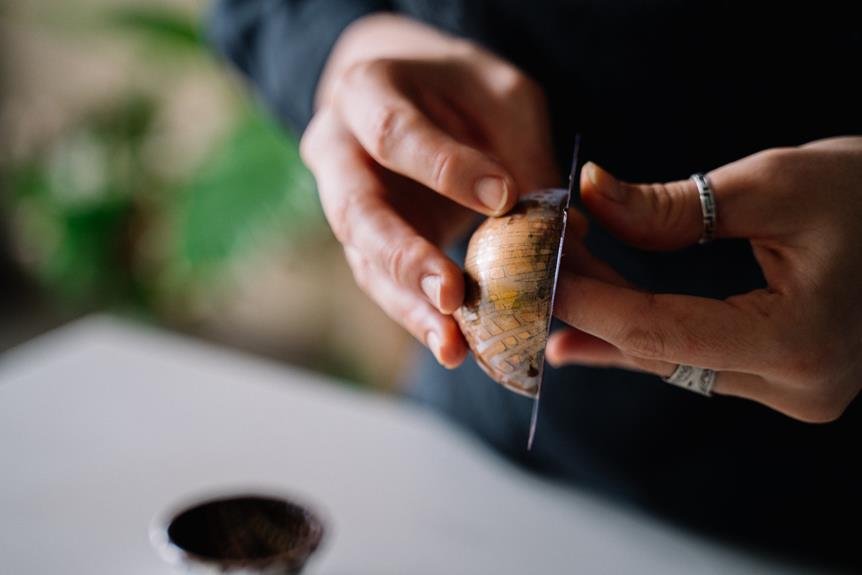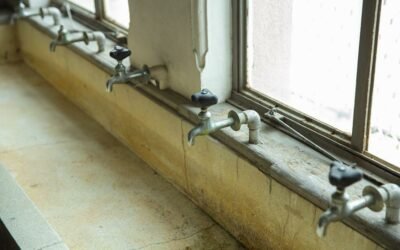Can mold penetrate plastic?
Find out in this article as we explore the factors that influence mold growth on plastic surfaces and the types of plastic that are more susceptible to mold.
Discover prevention and maintenance tips to keep your plastic items mold-free.
Additionally, learn about effective treatments for mold on plastic to ensure the longevity and cleanliness of your belongings.
Don't let mold take over – arm yourself with knowledge and protect your plastic items today.
Key Takeaways
- Mold can grow on plastic surfaces that have small cracks and crevices, providing a suitable environment for its growth.
- Moisture from condensation, leaks, or high humidity levels can accumulate on plastic surfaces and support mold growth.
- Organic matter, such as dust or food particles, can settle on plastic surfaces and provide nutrients for mold growth.
- Regular cleaning of plastic surfaces and addressing sources of moisture promptly can help prevent mold growth.
Mold Growth on Plastic Surfaces
Can mold grow on plastic surfaces?
Yes, it's possible for mold to grow on plastic surfaces. Mold is a type of fungus that can grow on a variety of materials, including plastics. While plastic isn't an ideal surface for mold growth, it can still provide a suitable environment under certain conditions.
Mold requires moisture, organic matter, and a suitable temperature range to grow and thrive. Plastic surfaces, especially those that are porous or have small cracks and crevices, can provide a conducive environment for mold growth if these conditions are met. Moisture can accumulate on plastic surfaces due to condensation, leaks, or high humidity levels. Organic matter, such as dust or food particles, can also settle on the surface and provide nutrients for mold growth.
To prevent mold growth on plastic surfaces, it's important to keep them clean and dry. Regularly clean the surfaces using a mild detergent or disinfectant to remove any organic matter that could support mold growth. Ensure that any leaks or sources of moisture are addressed promptly to minimize the risk of mold development.
Factors Affecting Mold Penetration
To understand the factors that affect mold penetration, consider the role of moisture in facilitating mold growth on plastic surfaces. Mold needs moisture to thrive, and when it comes into contact with plastic, it can penetrate the surface if certain conditions are met. Here are three key factors that influence mold penetration:
- Porosity of the plastic:
Mold can penetrate plastic more easily if it's porous. Porous plastics have tiny spaces or pores that allow moisture to seep in, providing a suitable environment for mold growth. Non-porous plastics, on the other hand, have a tightly sealed surface that makes it more difficult for mold to penetrate.
- Moisture content:
The amount of moisture present on the plastic surface plays a crucial role in mold penetration. Mold requires a certain level of moisture to grow, and if the plastic surface is consistently damp or wet, it provides the ideal conditions for mold to penetrate and thrive.
- Temperature:
Mold growth is influenced by temperature. Higher temperatures create a more favorable environment for mold to grow and penetrate plastic surfaces. Mold tends to thrive in temperatures ranging from 68°F to 86°F (20°C to 30°C). Therefore, if the plastic surface is exposed to these temperatures along with moisture, it becomes more susceptible to mold penetration.
Understanding these factors can help you take preventive measures to reduce the risk of mold penetration on plastic surfaces. By controlling moisture levels and temperature, you can effectively minimize the potential for mold growth and keep your plastic items mold-free.
Types of Plastic Prone to Mold Growth
Plastic surfaces that are porous or have higher moisture content are more susceptible to mold growth. Certain types of plastic provide an ideal environment for mold to thrive. Understanding which plastics are prone to mold growth can help you take preventive measures and protect your belongings.
| Plastic Type | Porosity Level | Moisture Content | Susceptibility to Mold |
|---|---|---|---|
| Polyethylene | Low | Low | Low |
| Polypropylene | Low | Low | Low |
| PVC | Medium | Medium | Medium |
| Nylon | High | High | High |
Polyethylene and polypropylene, commonly used in food packaging and containers, have low porosity and moisture content, making them less prone to mold growth. On the other hand, PVC, often used in plumbing pipes, has a medium porosity level and moisture content, making it more susceptible to mold. Nylon, which has a high porosity level and moisture content, is highly prone to mold growth.
It is important to note that even plastics with low porosity and moisture content can still harbor mold if they become contaminated with organic matter or exposed to high levels of humidity. Regular cleaning and maintenance can help prevent mold growth on any type of plastic surface.
Prevention and Maintenance Tips
To prevent mold growth on plastic surfaces, you should regularly clean and maintain them. Mold can thrive in moist environments, so it's crucial to keep your plastic surfaces dry and well-ventilated.
Here are some prevention and maintenance tips:
- Regular cleaning: Clean your plastic surfaces regularly using a mild detergent and water solution. Scrub the surface gently to remove any dirt or organic matter that can provide a breeding ground for mold.
- Proper storage: Store your plastic items in a cool, dry place to prevent moisture buildup. Avoid storing them in damp basements or areas prone to high humidity.
- Inspect for leaks: Regularly check your plumbing system and other sources of moisture for any leaks. Repair any leaks promptly to prevent water accumulation and mold growth.
Effective Treatment for Mold on Plastic
You can effectively treat mold on plastic by using a bleach solution. Mold on plastic surfaces can be unsightly and potentially harmful if left untreated. To eliminate mold growth and prevent it from returning, follow these steps:
- Prepare the bleach solution: In a well-ventilated area, mix 1 cup of bleach with 1 gallon of water in a bucket. Ensure you wear protective gloves and goggles to avoid direct contact with the bleach.
- Clean the affected area: Use a stiff brush or sponge to scrub the mold-infested plastic surface. Make sure to remove any visible mold and dirt.
- Apply the bleach solution: Dip a clean cloth or sponge in the bleach solution and thoroughly wipe the affected area. Ensure the surface is completely saturated with the solution.
- Allow the solution to sit: Let the bleach solution sit on the plastic surface for at least 15 minutes. This will give the bleach enough time to kill the mold spores.
- Rinse and dry: Rinse the plastic surface with clean water to remove any residual bleach. Dry the area completely using a clean towel or allow it to air dry.
By following these steps, you can effectively treat mold on plastic and prevent its recurrence. Remember to regularly inspect and clean plastic surfaces to maintain a mold-free environment.
| Step | Instructions |
|---|---|
| 1 | Prepare the bleach solution by mixing 1 cup of bleach with 1 gallon of water. |
| 2 | Use a stiff brush or sponge to scrub the mold-infested plastic surface. |
| 3 | Dip a clean cloth or sponge in the bleach solution and wipe the affected area. |
| 4 | Let the bleach solution sit on the plastic surface for at least 15 minutes. |
| 5 | Rinse the plastic surface with clean water and dry it thoroughly. |
Conclusion
In conclusion, mold can penetrate plastic surfaces under certain conditions. Factors such as moisture, temperature, and the type of plastic can affect mold growth.
Certain types of plastic, such as polyvinyl chloride (PVC), are more prone to mold development. To prevent mold growth on plastic, it's important to maintain cleanliness, control humidity levels, and ensure proper ventilation.
In case of mold infestation, effective treatment methods should be employed to remove mold and prevent its recurrence on plastic surfaces.






0 Comments